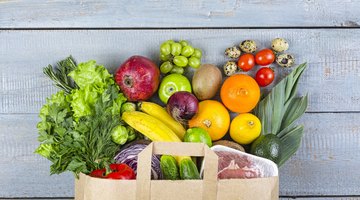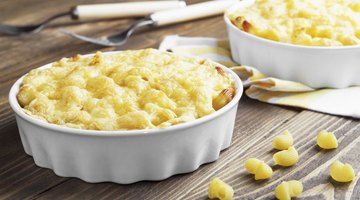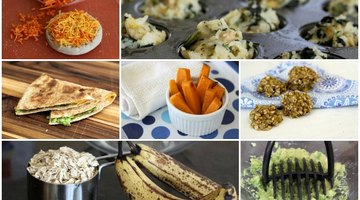Finger Food Ideas for an 8-Month-Old
By the time your baby is 8 months old, it's likely you've delved into the world of feeding him solid foods. With his increasing dexterity, he'll now be ready to start feeding himself. While you'll have a number of options, your own creativity and culture may push you toward other foods too. Just be sure that whatever you choose, it's soft enough to be "gummed" -- your baby doesn't have teeth yet -- and that the foods are cut into pieces small enough for him to swallow easily. Your baby is still young, so introduce new foods slowly, one by one, working up to a variety of food groups within a few months.
Veggies: The Softer the Better
There's no time like the present to introduce your child to the benefits of eating her vegetables. Known as a "superfood," avocados are a favorite finger food. They're rich in omega-3 fatty acids, contain "good" cholesterol and protein and taste really good too. Other vegetables can be steamed long enough to allow for the right amount of softness for first finger foods. Try steaming broccoli or carrots and then cutting them into small pieces. Your baby can also eat soft-cooked squashes, such as butternut or acorn squash, which provide vitamins A, C, E and B6 as well as protein and fiber.
Fruits: Bananas and Beyond

Breakfast Foods for 9-Month-Old Babies
Learn More
Fruits also provide vitamins, minerals, carbohydrates and fiber coupled with sweetness humans love. Bananas are a popular go-to food for babies, since they're so easy to tote around and can be cut into small pieces quickly and easily. Also try very ripe pears, mangoes or even melons to provide that delicious sweetness along with a variety of nutrients. As always, choose ripe fruits -- even nearly ripe fruits can be too hard -- and cut them into very small pieces for your baby to sample.
Protein: Eggs and More
While some parents shy away from offering meat and eggs to babies this young, you don't have to. Among its recommended finger foods for babies, the American Academy of Pediatrics lists both scrambled eggs as well as cooked chicken. Chop the chicken into very small pieces and ensure both eggs and chicken are fully cooked to prevent food-borne illnesses such as salmonella.
Grains: Soft Starches Babies Love

Non-Acidic Foods for Babies
Learn More
Starchy foods can add valuable fiber into your baby's diet. Try pieces of whole-wheat bread cut into chunks or puffed rice or oat cereal -- including the o-shaped, unsweetened cereals so often found on the high chair trays of babies. Soft noodles are also fine for babies this age. As with all foods, be sure to monitor your child after introducing new foods and look for changes in digestion, rashes or other indications of food sensitivities or allergies.
Related Articles
- Healthy Children: Switching to Solid Foods
- KidsHealth: Feeding Safety
- Natural News: Avocado Nutrition Facts - Six Things About This Amazingly Healthy Superfood
- What to Expect: Best Finger Foods for Babies
- FitDay: The Nutrition of Acorn Squash
- American Academy of Pediatrics: Infant - Food and Feeding











